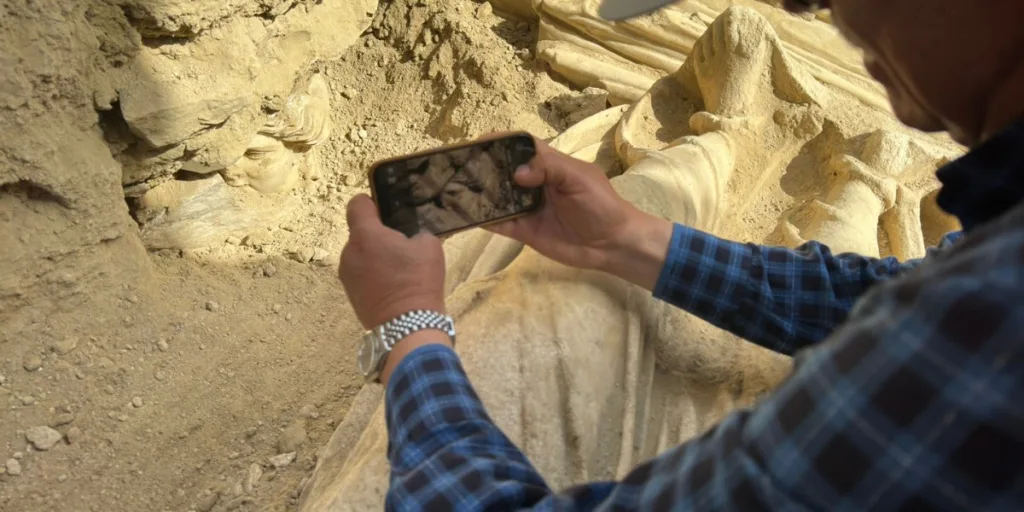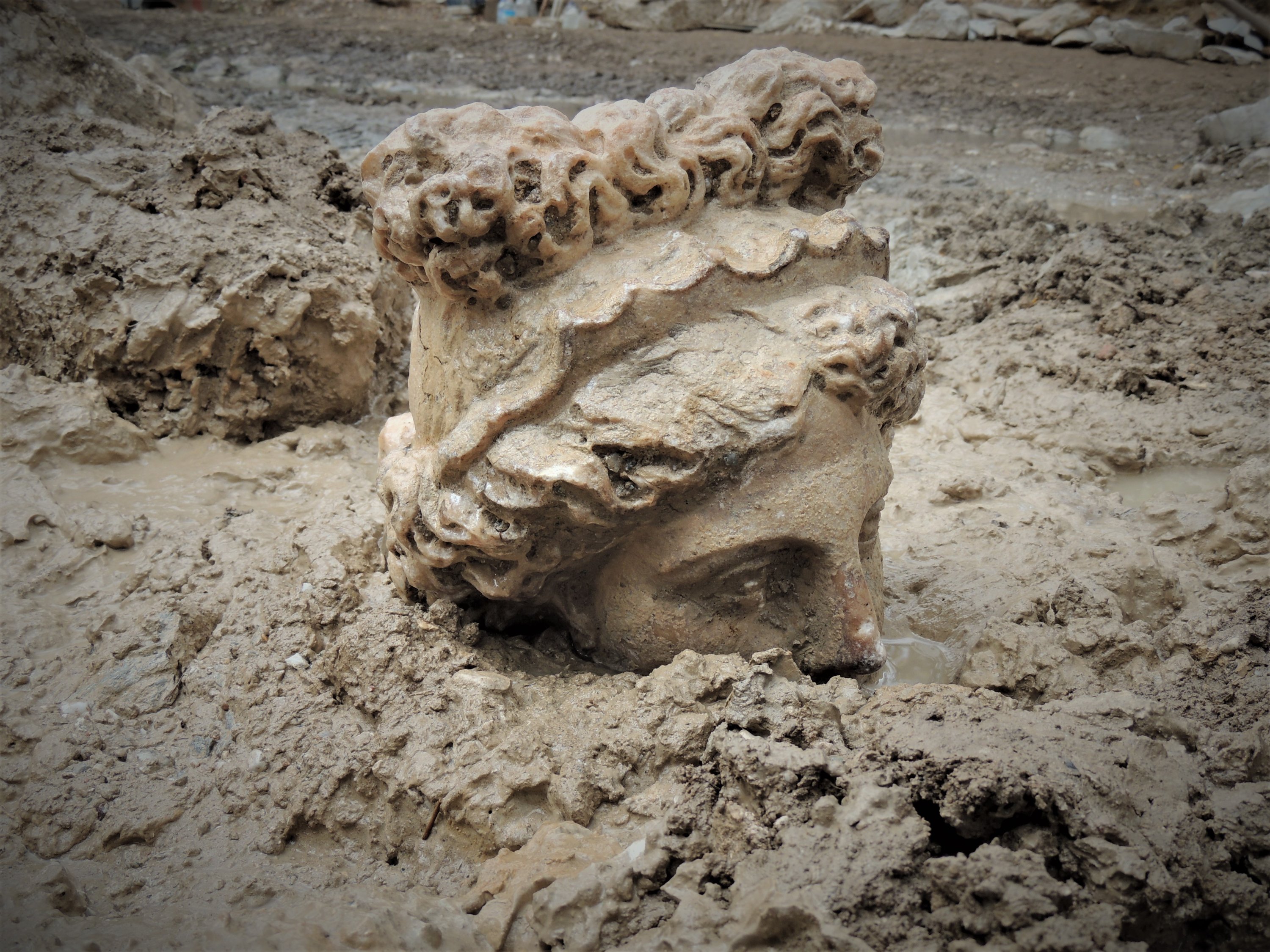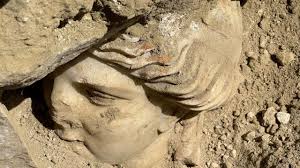A 2100-year-old statue head of Hygieia, the Goddess of Health, was recently discovered during excavations in the ancient city of Laodikeia, located in Pamukkale, Denizli, southwestern Türkiye. Laodikeia, situated on the south side of the Lycus River and about 6 km north of Denizli, was one of the most famous and influential cities of the 1st century B.C. The city’s remains predominantly date back to this era.
Laodikeia, often referred to as “Laodikeia on the edge of the Lycus” in ancient sources, was founded by Antiochus II between 263-261 BC and named after his wife, Laodice. Under Roman rule, Laodikeia became the center of the conventus of Kybira (present-day Golhisar-Horzum), largely due to its strategic geographical location.
The city boasts an impressive array of ancient structures, including the largest stadium in Anatolia, two theaters, four baths, five agoras, five nymphaea (fountains), long colonnaded streets, and numerous temples, churches, and basilicas. These architectural marvels highlight the city’s historical significance and its role as a major urban center in antiquity.

Earthquakes frequently plagued Laodikeia, significantly impacting its development and stability. In 494 AD, a massive earthquake severely crippled the city, causing extensive damage. This disaster, coupled with another severe earthquake between 602-610 AD and the growing threat of Arab raids, ultimately led to the abandonment of Laodikeia. The combination of natural calamities and external threats made it increasingly difficult for the inhabitants to sustain their city, marking the end of its prominence in the region.
Celal Şimşek shared the unearthing of the 2,100-year-old statue head of the goddess Hygieia on his social media X account, noting, “The meeting of the Sun and Hygieia with us in Laodicea after 2,100 years.” This discovery adds to the rich historical tapestry of Laodikeia, a city renowned for its cultural and architectural significance during the 1st century B.C.

Hygieia was the ancient Greek goddess of health, giving her name to the philosophy of hygiene. She was a young goddess, daughter and chief attendant to Asclepius, the god of medicine. Hygieia oversaw cleanliness and practices for living a long life, embodying the principles of preventive medicine.
In classical sculpture, Hygieia was often depicted holding or feeding a large snake, symbolizing Asclepian medicine. Statues of Hygieia were prominently placed in major healing centers, particularly within the temples of Asclepius. Her primary temples were located in Epidaurus, Corinth, Cos, and Pergamon. These statues and temples underscored her integral role in ancient health and medical practices.


